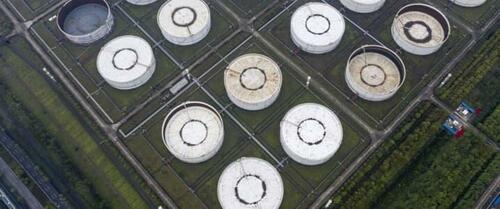China & US Shape 2025 Oil Predictions
Authored by Irina Slav via OilPrice.com,
-
Oil demand growth in 2025 is forecasted at 1–1.4 million bpd.
-
China’s petchem sector drives oil demand growth, but growth from its transportation sector is flatlining.
-
U.S. shale production growth may slow due to higher breakeven costs, depletion of Tier 1 acreage, and subdued oil prices limiting drilling incentives.
Doubts about oil demand growth will persist beyond 2024, and fears of a price slump will be there to keep them company. That’s according to some recent predictions about the state of the oil market in 2025, which see demand growing, China directing the market, and OPEC still likely to unwind its production cuts.
As early as November, some analysts warned that OPEC may decide it has had enough of losing market share and start bringing oil back whatever the price. This could bring the benchmarks down to $40 per barrel, Tom Kloza from OPIS told CNBC.
“You could get down to $30 or $40 a barrel if OPEC unwound and didn’t have any kind of real agreement to rein in production. They’ve seen their market share really dwindle through the years,” Kloza said. These remarks echoed a forecast by the International Energy Agency, which in October said that OPEC might be facing a decline in its market share from 34% to a little over 31% by 2028, squeezed by producers including the United States, Canada, Brazil, and Guyana.
Perhaps the choice between flooding the market with crude to drown rivals, which OPEC has already done before, and keeping the output limits in place will be what marks 2025 for the production cartel. And perhaps the fear that analysts say OPEC producers should feel about the large non-OPEC oil countries is a little bit overrated.
The U.S. is the biggest threat to OPEC’s market share, according to those analysts. The largest oil and gas producer in the world, the country has boosted its production of both hydrocarbons significantly over the course of just two decades. Some in the industry are warning that this cannot continue forever at the same rate because the resources are finite, and the cheapest oil and gas has been depleted or close to being depleted. This means higher production costs down the line, even with the notorious efficiency gains that surprised the analyst tribe last year.
There is, however, a more immediate source of pressure on U.S. producers that is going to limit their own production growth next year, despite forecasts—and despite a very pro-oil president about to enter the White House in January. That source of pressure is simply the oil price. One Exxon executive spelled it out recently amid a flurry of predictions that the U.S. will become even bigger of an oil and gas producer thanks to Trump because everyone would start drilling at will.
“I think a radical change is unlikely because the vast majority, if not everybody, is primarily focused on the economics of what they’re doing,” Liam Mallon, president of upstream at the supermajor, said in November. “If those rules [on federal land drilling] were substantially changed, you would be able to drill more, assuming you have the quality and met your economic threshold,” Mallon also said. “But I don’t think we’re going to see anybody in the drill, baby, drill mode. I really don’t.”
Others have warned about drillers running out of Tier 1 acreage, prompting the Society of Petroleum Engineers to note that according to empirical data collected by Deloitte, there is not much of a difference between Tier 1 and Tier 2 acreage in terms of quality, at least in the Permian and the Eagle Ford plays. Whatever the tier, however, breakeven matters, and breakeven in the shale patch is higher than it is in many conventional plays. There is also the matter of oil demand and when forecasters talk about oil demand, all eyes are on China.
“We expect that China’s oil demand will continue to rise in 2025, but almost all of the growth will be accounted for by petrochemical feedstocks. Demand for transport fuels is likely to decline,” Wood Mackenzie wrote in a recent set of predictions for next year. The consultancy also said it expected global diesel demand to rise next year but only marginally, thanks to China’s new obsession with LNG trucks, which would undermine growth in this huge consumer. Wood Mac also predicted a decline in China’s gasoline demand because of EVs and growth in jet fuel demand that would not be able to offset the declines in the other fuels.
Speaking of demand, forecasts vary but moderately. The IEA sees demand growth next year at 1.1 million barrels daily. Wood Mackenzie sees it at 1.4 million barrels daily. ING cited demand estimates of “a little under 1 million bpd,” probably referring to an earlier IEA estimate of demand in a recent report on possible 2035 developments in oil. Morgan Stanley agrees with the IEA, forecasting demand growth of 1.1 million bpd for next year. Most forecasters appear to agree, however, that supply growth will exceed demand, invariably citing China as a driver of the slowdown in demand growth and non-OPEC producers as the driver of the surplus they expect.
Tyler Durden
Thu, 12/19/2024 – 12:45


